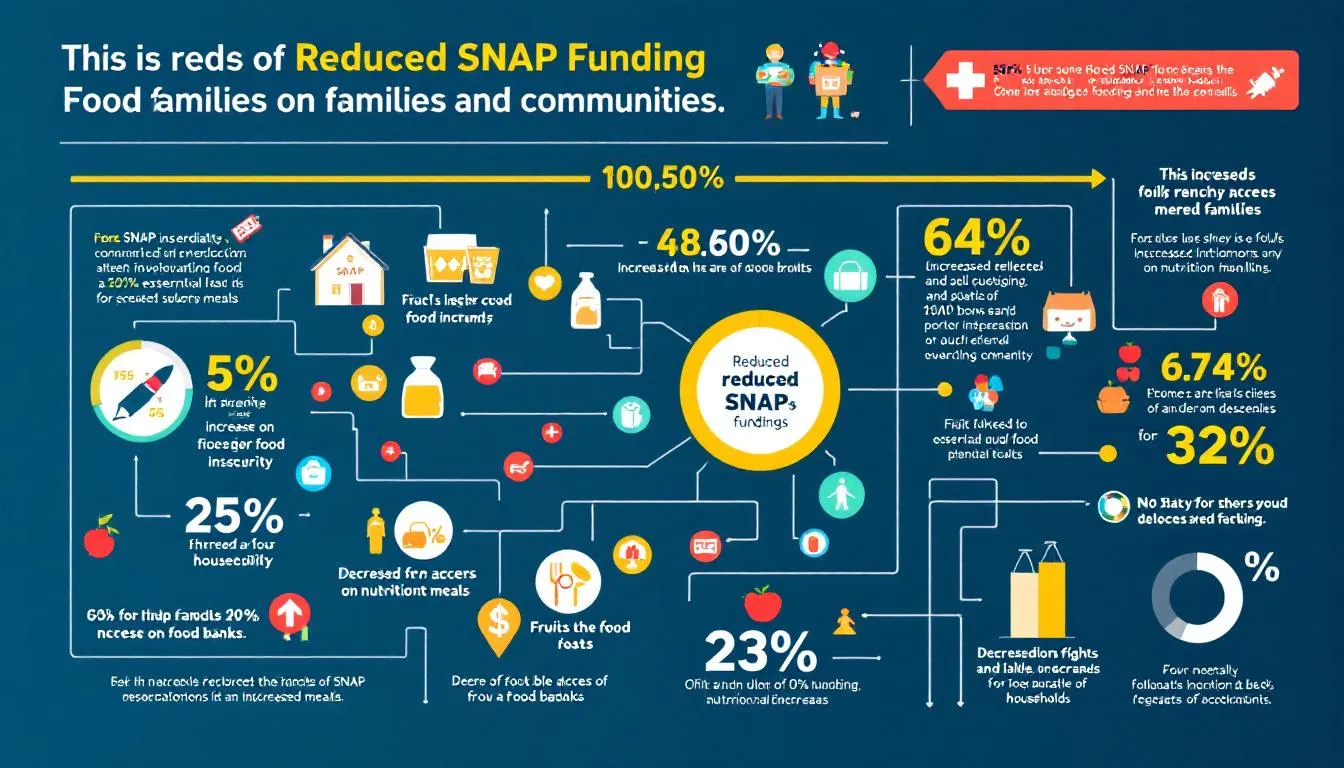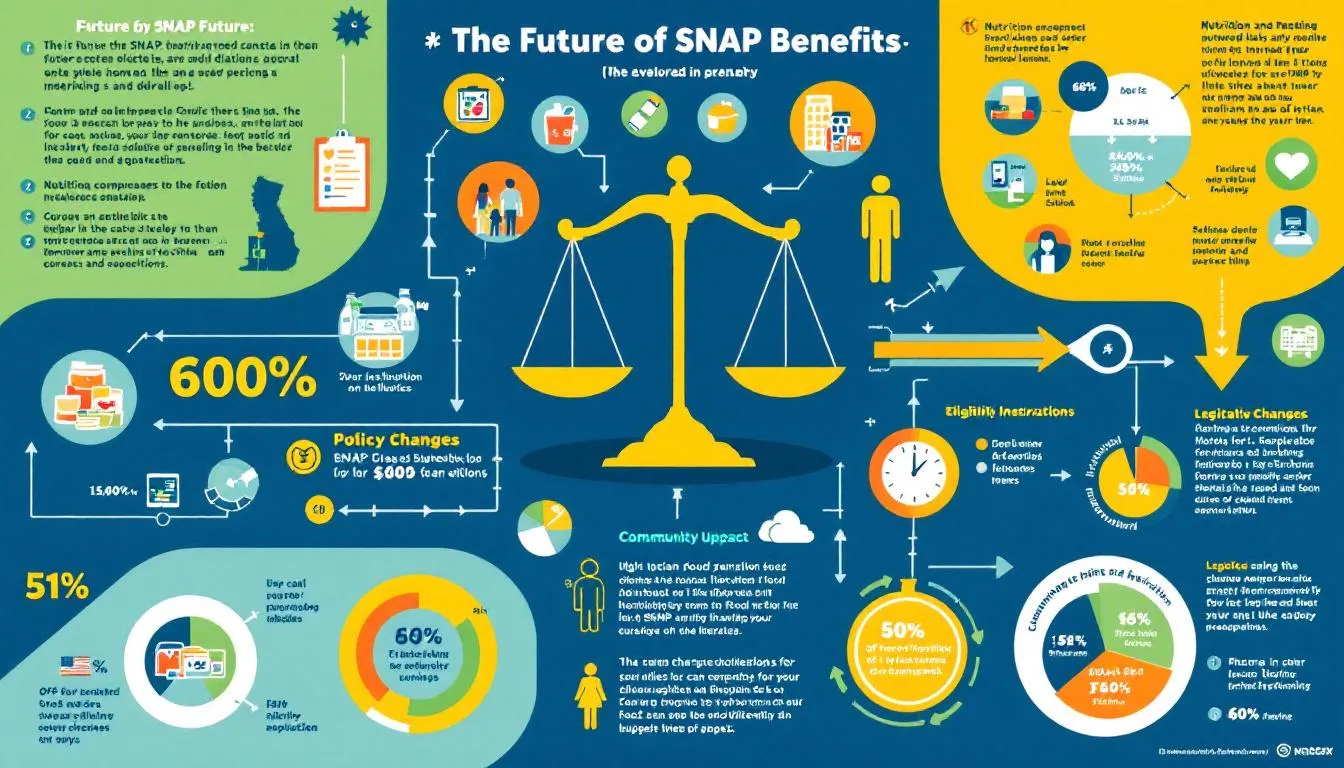Increase in SNAP Benefits to Support Low-Income Families
SNAP benefits help low-income families buy food. This article explains who qualifies, how much they receive, and recent changes including increased funding and legal challenges.
Are you a West Virginian looking for food assistance during the shutdown? Visit this WebsiteKey Takeaways
- The federal government allocated nearly $100 billion for SNAP in fiscal year 2024, highlighting its commitment to combating hunger among low-income families.
- Reduced SNAP funding exacerbates food insecurity, with average monthly benefits often inadequate for basic food needs, prompting increased reliance on food banks.
- Recent court rulings affecting SNAP eligibility and funding could reshape the program and its effectiveness in providing necessary support to vulnerable populations.
Federal Government's Role in SNAP Benefits

The federal government is integral in managing and funding the Supplemental Nutrition Assistance Program (SNAP). Key points include:
- In fiscal year 2024, nearly $100 billion was allocated to SNAP, emphasizing the government’s substantial financial commitment to food assistance.
- SNAP constitutes about 70% of the USDA’s nutrition assistance budget.
- The program plays a significant role in combating hunger and food insecurity.
Challenges in maintaining full SNAP benefits persist. A federal judge ruled that the Trump administration failed to comply with a court order to fully fund SNAP benefits for November, highlighting the complexities and legal hurdles in ensuring continuous support for low-income families.
USDA's Involvement
The USDA administers SNAP, affecting nearly 39% of child recipients under 18. The department manages programs, sets regulations, and provides funding to state programs to meet the needs of low-income households, overseeing approximately 70% of all nutrition assistance spending.
States modify their systems to handle fluctuations in SNAP payments due to changing federal guidelines. They are also implementing new software systems to streamline payment processes and reduce processing times, ensuring benefits reach recipients efficiently.
Emergency Funds Usage
During crises such as the federal government shutdown, emergency funds become crucial. Congress allocated over $5 billion for situations where SNAP funding might be disrupted. These contingency funds provide additional financial assistance to recipients during emergencies.
Emergency funds help maintain SNAP benefits and ensure continued assistance to vulnerable populations, bridging gaps when regular funding is insufficient.
Impact of Reduced SNAP Funding

Reduced SNAP funding significantly increases food insecurity among low-income families. The average SNAP benefit of around $188 per month is often insufficient to meet basic food needs. Recent court rulings have emphasized the need for adequate funding, yet proposed changes to SNAP risk further limiting access.
Delays in distributing SNAP benefits can leave families without timely assistance, affecting millions who rely on these payments. Appeals against court rulings requiring full SNAP benefits introduce further uncertainty.
Food Banks' Response
Food banks are essential in bridging the gap left by reduced SNAP funding. Organizations like Feeding America operate at full capacity to meet increased demand. If SNAP benefits are cut, food pantries may need to provide an additional six to nine billion meals each year.
Monetary donations are crucial, allowing food banks to purchase supplies in bulk and maximize resources.
Strain on Recipients
SNAP recipients face heightened financial stress as decreased benefits limit their ability to purchase sufficient food. Technical issues with EBT card systems further exacerbate these challenges, leaving families without access to essentials during system disruptions.
Legal Rulings Affecting SNAP Benefits
Recent legal rulings have impacted SNAP administration. District court decisions mandating changes in eligibility criteria could increase the number of families that qualify for benefits. Appeals and legal challenges may influence future distribution and funding.
District Court Decisions
A district court ruling ordered the Trump administration to fully fund November SNAP benefits. Such decisions profoundly impact low-income families relying on these benefits.
Appeals and Legal Challenges
The Justice Department’s appeal against court orders reflects ongoing legal battles affecting SNAP benefits. Outcomes could have lasting implications for food assistance availability.
Distribution Delays and Logistical Issues
Distribution of SNAP benefits often faces delays due to state-level adjustments and bureaucratic inefficiencies. Delays can leave millions without timely assistance.
State-Level Adjustments
States implement policies to streamline SNAP benefit distribution, reduce barriers, and enhance processing efficiency.
EBT Card Processing
Issues with EBT card systems, such as outages or delayed activation, can prevent recipients from accessing benefits. Improved technology and staff training can reduce disruptions.
Community Support for SNAP Recipients

Community organizations provide essential support through food drives, free meals, and assistance programs. Local initiatives like ‘grocery buddies’ help families share resources and manage food access.
Food Pantries' Role
Food pantries supplement SNAP benefits by offering additional food resources to families in need, prioritizing non-perishable goods.
Local Initiatives
Local programs and business support enhance access to meals and essentials for SNAP recipients, reinforcing community resilience.
Future of SNAP Benefits

The future of SNAP involves ongoing legislative proposals and advocacy. Potential reforms include increasing benefits and modifying eligibility criteria to better support low-income households.
Legislative Proposals
Legislative efforts aim to secure additional funding, amend work requirements, and restore eligibility to previously excluded populations.
Advocacy and Support
Organizations collaborate with legislators to protect and expand SNAP benefits, ensuring the program continues to support vulnerable families.
Summary
SNAP benefits are essential for millions of low-income families. Federal funding, legal rulings, distribution challenges, and community support all impact program effectiveness. Advocacy and legislative efforts are crucial to ensure continuous, adequate assistance.
Frequently Asked Questions
What is the highest income to qualify for SNAP?
Household income must generally be at or below 130% of the federal poverty level, depending on household size and state guidelines.
What role does the federal government play in SNAP benefits?
The federal government allocates funding and oversees administration through the USDA to ensure eligible individuals receive food assistance.
How do food banks respond to reduced SNAP funding?
Food banks increase meal offerings and resources to meet demand, despite operational challenges caused by funding cuts.
What are some recent legal rulings affecting SNAP benefits?
Court rulings have changed eligibility criteria and funding levels, and ongoing appeals continue to influence distribution.
How do state-level adjustments impact the distribution of SNAP benefits?
Updated state policies and technology streamline distribution, reducing delays and ensuring recipients receive timely assistance.
If you or someone you know needs food assistance in West Virginia, there are resources available in several counties. Check out the programs and support available in Gilmer County, Lewis County, Harrison County, and Upshur County.
These resources provide information on food banks, meal programs, and other forms of support for families in need. The SNAP Program in West Virginia is part of the Health and Human Services Family Assistance Services. The Family Assistance Services provide: Medicaid WVCHIP Medicaid for Long-Term-Care Medicare Premium Assistance Programs Non-Emergency Medical Transportation (NEMT) Supplemental Nutrition Assistance Program (SNAP) Emergency Assistance Indigent Burial Program Refugee Resettlement Tel-Assistance SNAP E&T Low Income Energy Assistance Program (LIEAP) 20% Discount Utility program Temporary Assistance for Needy Families (TANF) School Clothing Allowance (SCA) and Other Needs Assistance Disaster Programs.